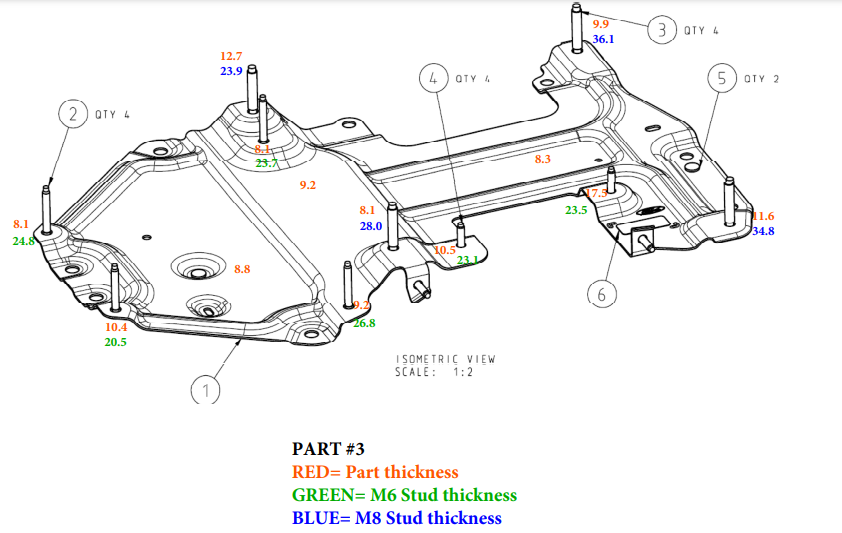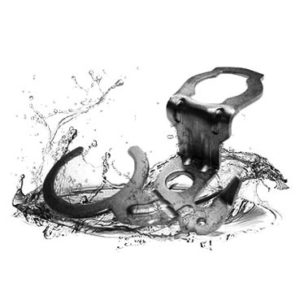Dekalb Metal
What is a Micron and Why They Are Misleading in Plating
Before we talk about plating distribution, let’s first understand what a micron is. A micron is a unit of length equal to one millionth of a meter; a micrometer. In the plating world, this results in a very thin layer of plating. Most plating specs call for 5 microns, 8 microns, or 12 microns as the minimum plating…
Read MoreZinc-Nickel Plating Specification Highlight: FORD – WSS-M1P87
At DeKalb Metal Finishing, we care about closely following and meeting the specifications set forth by the automotive industry. This is a primary reason why we have become specialists in understanding the OEM specifications created for plating automotive parts. The most common questions we get as zinc nickel electroplating experts are regarding Zinc-Nickel (Zn-Ni) plating…
Read MoreWhy Is the NAVISTAR – MPAPS G22 Specification Important to Automotive Part Manufacturers and Zinc Nickel Plating?
The NAVISTAR-MPAPS G22 specification outlines the requirements for the materials and manufacturing processes used in the production of engine components for Navistar diesel engines. Automotive part manufacturers who produce engine components for Navistar diesel engines need to be familiar with this specification to ensure that their products meet Navistar’s quality standards and are compatible with…
Read MoreAn Overview of Metal Finishing Methods for Metal Plating
The numerous benefits of plating metal parts for the automotive industry and other industries inevitably leads to many methods of performing metal plating. Professionals adopt different metal plating methods based on their metal products and needs. Some of these methods include: Electroplating Electroplating is a process used when the metal used for plating is placed…
Read MoreNot All Electroplating Companies are the Same
At Dekalb Metal Finishings, you will recieve the electroplating results you need. With over 70 years of experience, we focused on customer care and solutions that elevate your parts and products to a whole new level of quality and dependability.
Read MoreZinc-Nickel Plating: Producing Durable, Functional Protection
Manufacturers require their products to be functional in a variety of environments. At DeKalb Metal finishing, our staff works with our customers to provide them with durable, quality and highly functional components to ensure all products leaving our shop address all longevity and aesthetic concerns. This is why for those who specify anti-corrosive measures, we…
Read MoreZinc Iron Plating From Dekalb Metal Finishing
Dekalb Metal Finishing was the first US plating company to offer zinc iron plating as a method of protecting steel components against premature corrosion.
Read MoreWhat Is Zinc Nickel Plating?
Share this Image On Your Site <a href=”https://dekalbmetal.com/what-is-zinc-nickel-plating/” title=”What Is Zinc Nickel Plating?”><img src=’https://dekalbmetal.com/wp-content/uploads/2018/10/Dekalb_Zinc_Nickel_Infographic_final.jpg’ alt=’What Is Zinc Nickel Plating?’ width=’100%’ border=’0′ /></a>
Read MoreElectroplating Companies Improve Metals for Service
[vc_row row_type=”row” use_row_as_full_screen_section=”no” type=”full_width” angled_section=”no” text_align=”left” background_image_as_pattern=”without_pattern” css_animation=””][vc_column][vc_column_text]Electroplating companies have been servicing and supporting other industries for almost a century. A large number of products that serve as components in kitchens, bathrooms, toys and those utilized in the automotive industry are developed using this chemical process. At DeKalb Metal Finishing we have spent over 70…
Read MoreTHE PROGRESS OF ZINC PLATING
In general, plating involves providing a specific surface cover or coating to a metal. This assists in preserving the surface of the metal and preventing environmental damage from corrosion. It may also improve adhesion of paints and allow for bonding of primer, adhesive, and rubber.
Zinc plating was first done over a hundred years ago in France. It was developed by a chemist, P.J. Malouin, and included dipping metal into large vats of liquid molten zinc. This process was further refined by French and British scientists to include the treatment of the metal with 9% sulfuric acid and then fluxing the treated metal with ammonium chloride.
Read More



